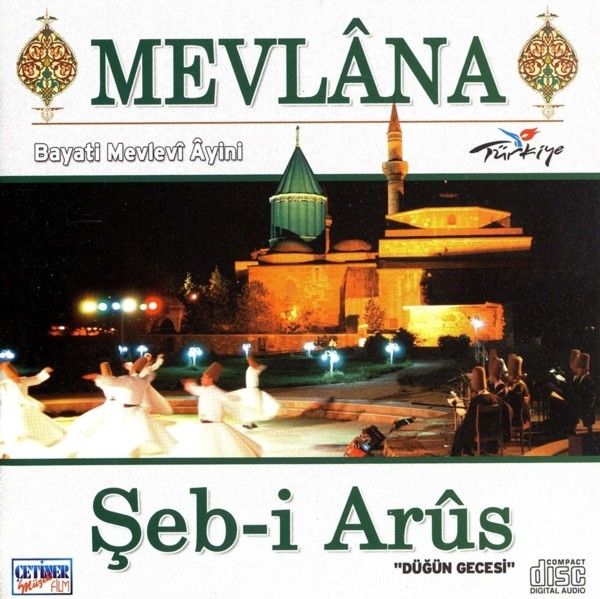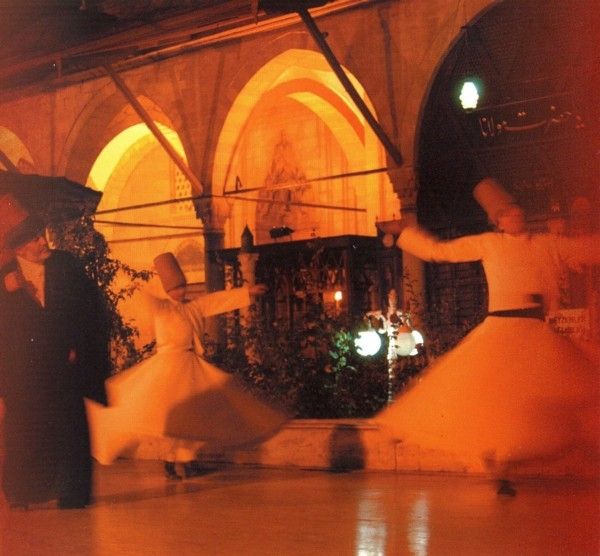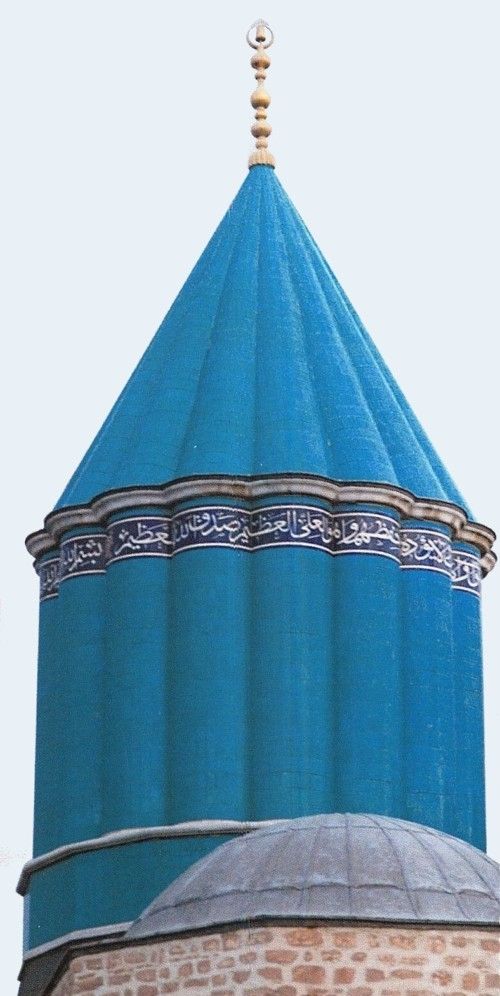
cetinermuzik.com.tr
mevlana.net
Çetiner Müzik & Film
2004

cetinermuzik.com.tr
mevlana.net
Çetiner Müzik & Film
2004
01 - Şiir / Gel Gel (İsmail Coşar) [1:07]
02 - Na' t-ı Mevlâna [4:55]
03 - Ney Taksimi (Süleyman Yardım) [6:13]
04 - Bayati Peşrev [11:35]
05 - 1. Selam, 2. Selam, 3. Selam, 4. Selam [26:16]
06 - Niyaz İlahisi [4:51]
07 - Ud Taksimi [1:38]
08 - Kur'an-ı Kerim (Cahit Nazlı) [4:59]
MUTRIB GRUBU
Süleyman YARDIM, ney
H.Emre ZİYAGİL, ud
Emre ERDOĞAN, kanun
Aydemir TUNCER, tambur
Burak ALBAYRAK, tambur
Emre APAYDIN, kemeçe
Akın Tikel ÖZKÖK, vyolonsel
B.Selman TULGAR, küdum
Suat ORHAN, bendir-daire
Kemal OĞUR, hanende
Ufuk YÜRÜÇ, hanende
Ali POLATTEMİR, hanende
Mustafa YILDIRIM, hanende
Cahit NAZLI, hanende, Na't, Kur'an-ı Kerim
yapım:
Çetiner Müzik & Film
yapımcı: Hikmet Çetiner
müzik yönetmeni: Süleyman Yardım
şiir: İsmail Coşar
prodüktör: Mehmet Çetiner
süper vizör: Halil Ünsal, Nuri Güzelsoy, Ramazan
Öz

DERVISHES CEREMONY
Sema is the first thing which occurs in one's mind when he means
"Mevlevilik" the way of life style of Mevlevies. It means,"to hear" in
any dictionary. When we take it as a term, it means to move in ecstasy
while listening to the musical tunes and whirl around himself in
ecstasy. Sema was executed by a reason of religious enthusiasm and
Islamic mysticism without obeying any rule during the time of Hazreti
Mevlana. Then beginning with the time of Sultan Veled and Ulu Arif
Çelebi, it was executed in a complete discipline, and was put
into a tight order until the time of Pir Adil Çelebi. During
this period, executing the SEMA became possible to learn and to teach.
Thus, Sema Performances reached to the latest formation in the XV.
Century. Later on Nâtı Sherif was added in the XVII. Century.
Sema symbolicly states the formation of the Universe, to come to the
life of humanity in the Universe, the love of human beings against God
and to act in love of God, to perceive his worship and to incline
towards to be the perfect man.
Mutrip and semasens (dervishes) take place in the semahane (sema place)
after greeting the Sheikh' s Post; then the Sheikh enters into the
semahane; he greets mutrip team and semazens, and sits down on his post.
The saz group (group of musicians) of the mutrip, consist of Nays (reed
flutes played in Mevlevi Music). Mostly rebabs, kanuns, and tamburs
(all music instruments) are also added to this group. There is a
Neyzenbaşi as a chief nay players and there is a Kudümzen başi who
conducts the orchestra and the performance. Ayinhans sing the notes
with rhythm while they are playing two or three kudüms and one of
them joins to the orchestra with a tambourine with cymbals and the
other one with a tambourine without cymbals that is called "Bendir".
Sema Ceremony begins with "Na't-ı Sherif". Nat-ı Sherif is a poem of
Hazreti Mevlana which praises Hazreti Muhammed who is the most sacred
creature and was caused to be created of the Universe. The compositor
"Itri" whose name was Buhurizade Mustafa Efendi, composed this Na't in
the XVII Century in the tune of Rast. The Na't-han sings this Na't on
foot and without saz (orchestra).
Kudüm beatings follow the Na't. This is the command of the Great
Creator Allah about the existence; it means "be" or "exist". According
to the Islam belief, God created first the human body as spiritless,
then he blow upon the body from his soul and made human body alive.
Ney Taksimi (Ney Performance) which is done after Nat, represents this
heavenly blow.
After the Nay Performance which is an instrumental improvisation the
peshrev (the best known form of long rhythmic music) begins, the Chief
and the semazens come to the Sema Square whirling from right to left in
a circle. They go around three times and it is called "Devr-i Veledi",
Veledi Period.
An imaginary supposed line between the door of Semahane and the red
post against it, divides the Semahane into two equal circles. This line
is called "Hatt-ı istiva", is accepted as sacred by mevlevi and it is
never stepped on.
The fourth scene is Sultan Veled Age. This is a circular walk of
semazens who greet each other three times with a peshrev. This form is
a greeting of secret soul to human soul. The semazen who comes to the
post level from the right side of the Sema Square, passes to the
opposite side without stepping on the Hatt-ı istiva and without turning
his back to the post. Thus he comes face to face with semazen who
follows after him. These two dervishes bow down at the same time and
greet each other. This greeting is called "Mukabele"
The Dervish who comes to the point where Hatt-ı istiva cuts across the
Sema Square, greets again bowing and goes on walking without stepping
on the Hatt-ı istiva.
Devr-i Veledi (Veled's Period) is completed at the end of the Third
Scene when the Sheikh takes place on the post. Under the guidance of
the Sheikh, the Spiritual Trainer, these periods symbolize Mutlak
Hakikat (Absolute Belief), knowing the religious information as "İlm-el
Yakin - Certain knowledge of God and religious life", sees as "Ayn-el
Yakin - with certainty",
and "Hakk-al Yakin" symbolizes to reach to God.
Kudümzenbaşi warns the end of the Devr-i Veled with the beatings
and Neyzenbaşi makes short performance with the instrument and the
"ayin" begins to be performed.
The semazen takes his black cloak off and borns to the spiritual vision
binds his arms in front of him and represents the figure one. Thus he
becomes the witness of the unity of God.
The semazens kiss the Sheikh's hands one by one and get his permission
and then they begin to sema.
Sema is composed of four parts. Each part has the name "SELAM". Sema is
conducted by the Semazenbaşi. He conducts the whirling of the semazens
and supplies a good order.
I. Selam (greeting), perception of someone' s worship
II. Selam, to feel amazement against the greatness and might of God.
Ill. Selam, convertment of this amazement feeling into love of God.
IV. Selam, to return to the duty of worship at the creation. Because
the highest and the greatest adobe in Islam, is the worship.
With the beginning of Selam IV, The Postnişin Sheikh too joins to sema,
without taking his cloak off and without opening his hands he begins to
sema. Whirling, he comes into the middle of the Sema Square from the
Post and by whirling again returns to his Post. This is called "Post
Sema'i".
When the sheikh takes place on his post the last Taksim finishes and
one chapter from Kuran-ı Kerim, that is Aşr-ı Şerit is read. Sema
Ceremony finishes with last prayers, with "Hu" cry (cries) which is the
name of god and with last greef. After the Sheikh, semazens and mutrib
greet the sheikh's post and leave the semahane.

SEM'Â GÖSTERİSİ
Mevlevilik deyince ilk akla gelen sem'a, lügatte işitmek
manasındadır. Terim olarak, musiki nağmelerini dinlerken vecde gelip
hareket etmek, kendinden geçip dönmektir. Hz. Mevlana
zamanında belli bir nizama bağlı kalmaksızın dini ve tasavvufi bir
coşkunluk vesilesiyle icra edilen sem'a, sonradan Sultan Veled ve Ulu
Arif Çelebi zamanından başlayarak Pir Adil Çelebi
zamanına kadar tam bir disiplin içine alınmış, sıkı bir nizama
bağlanmış; icrası öğrenilir ve öğretilir olmuştur.
Böylece
XV. yüzyılda son şeklini alan Sem'a töreni' ne daha sonra
sadece XVII. yüzyılda Na't-ı Şerif eklenmiştir.
Sem'a, sembolik olarak, kainatın oluşumunu, insanın alemde dirilişini,
Yüce Yaratıcı'ya olan aşk ile harekete geçişini ve
kulluğunu idrak edip "Insan-ı Kamil" doğru yönelişini ifade eder.
Mutrıb ve semazenlerin şeyh postunu selamlayıp, semahanede yerlerini
almalarından sonra şeyh efendi semahaneye girer, Mutrıb ve semazenleri
selamlayıp posta oturur.
Mutrıbtaki saz grubu asıl olarak neylerden oluşur. Bulunduğu takdirde
bu heyete rebab, kanun, tanbur gibi diğer sazlar da ilave edilir.
Neyzenlerin başında bir neyzen-başı, ayin-hanların başında da
kudümzenbaşı vardır. Bütün mukabeleyi kudümzenbaşı
yönetir. Ayinhanlar iki veya üç kudümle usül
vurarak eseri okurlar. Ayrıca ayinhanlardan biri hele (zil) ile, bir
diğeri de zilsiz def (bendir) ile usüle iştirak eder.
Sem'a Töreni, Na't-ı Şerif'le başlar. Na't-ı Şerif kainatın
yaratılmasına vesile olan, yaratılmışların en yücesi Hz.
Muhammed'i (S.A.V.) Oven, Hz. Mevlana'nın bir şiiridir. XVII.
yüzyılda bestekarlarından "Itri" adıyla tanınan Buhurizade Mustafa
Efendi'nin Rast makamından bestelediği bu nat-ı, na't-han ayakta ve
sazsız okur.
Na't'i, kudüm darbları izler. Bu yüce Yaratıcı'nın kainata
"OL" emridir. İslam inanışına göre Allah, insanın önce cansız
bedenini yaratmış, sonra ona kendi ruhundan üfleyerek diriltmiştir.
Na't' den sonra yapılan ney taksimi işte bu ilahi nefesi temsil eder.
Taksimden sonra peşrevin başlaması ile şeyh efendi ve semazenler, sem'a
meydanında sağdan sola doğru dairevi bir yürüyüşe
başlarlar. Sem'a meydanın' üç kez dolaşmaktan ibaret olan
bu yürüyüşe "Devr-i Veledi" denir.
Semahanenin giriş kapısı ile tam karşıdaki kırmızı post arasında var
olduğu kabul edilen bir çizgi, semahaneyi iki yarım daireye
böler. "Hatt-ı istiva" denilen bu çizgi, Mevlevilerce
kutsal sayılır ve asla üzerine basılmaz.
Dördüncü bölüm, Sultan Veled devridir. Bu,
Semazenlerin birbirine üç kere selam vererek, bir peşrevle
dairevi yürüyüşüdür. Şekilde gizli ruhun ruha
selamıdır... Sem'a meydanım sağ tarafından post hizasına gelen semazen,
Hatt-ı İstivâ'ya basmadan ve posta sırt çevirmeden
dönerek karşıya geçer. Böylece arkasından gelen
semazenle karşı karşıya gelir. Bir an göz göze gelen iki
derviş, aynı anda öne doğru eğilerek birbirlerine baş keserler.
Buna "Mukabele" denir.
Postun tam karşısında Hatt-ı İstiva'nın sem'a meydanıni kestiği noktaya
gelen derviş burada da baş keser ve Hatt-ı Istiva'ya basmadan
yürüyüşüne devam eder.
Üçüncü devrin sonunda şeyh efendinin posttaki
yerini almasıyla Devr-i Veledi tamamlanır. Bu devirler, şeyh denilen
manevi terbiyecinin rehberliğinde Mutlak Hakikat'i "İlm-el Yakin"
olarak bilişi, "Ayn-el Yakin" olarak görüşü "Hak-el
Yakin" olarak da O'na erişi sembolize eder.
Kudümzen-başının Devr-i Veledi'nin bittiğini ikaz eden vuruşları
ile neyzen-başı kısa bir taksim yapar ve ayin çalınmaya başlar.
Semazen üstündeki siyah hırkayı çıkararak, sembolik
olarak hakikate doğar, kollarını bağlayarak bir rakamını temsil eder.
Böylece Allah'ın birliğine şehadet eder.
Semazenler tek tek şeyh efendinin elini öperek izin alır ve
sem'a-ya başlarlar.
Sem'a, her birine "selam" adı verilen dört bölümden
oluşur ve semazenbaşı tarafından idare edilir. Semazenbaşı Semazenlerin
dönüşlerini kontrol ederek intizamı temin eder.
I. Selam, ınsanın kendi kulluğunu idrak etmesidir.
II. Selam, Allah'ın büyüklüğü ve kudreti karşısında
hayranlık duymayı ifade eder.
III. Selam bu hayranlık duygusunun aşka dönüşmesidir.
IV. Selam ise insanın yaratılıştaki vazifesine yani kulluğa
dönüşüdür. Çünkü İslam'da en
yüce makam, kulluktur.
IV. Selam'ın başlaması ile "postnişin" yani şeyh efendi de hırkasını
çıkarmadan ve kollarını açmadan sem'a'a girer. Postundan
sem'a meydanının ortasına kadar dönerek gelir ve yine dönerek
postuna gider. Buna "Post Semaı" denir.
Bu arada IV. Selam bitmiş, Son Peşrev ve Son Yürük semai
çalınmış, son taksim yapılmaktadır.
Şeyhin posttaki yerini almasıyla Son Taksim de sona erer ve Kur'an-ı
Kerim'den bir bölüm yani "Aşr-ı Şerif" okunur. Son dualar,
Allah'ın adı olan "HU" nidalan ile son selamlaşmalarla Sem'a
Töreni sona erer. Şeyh Efendi'den sonra semazenler ve mutrıp da
şeyh postunu selamlayıp semahaneyi ter-kederler.
